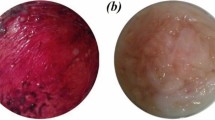Abstract
In this work, a mesh-supported submicron parylene-C membrane (MSPM) is proposed as an artificial Bruch’s membrane for the therapy of age-related macular degeneration (AMD). Any artificial Bruch’s membrane must first satisfy two important requirements. First, it should be as permeable as healthy human Bruch’s membrane to support nutrients transportation. Secondly, it should be able to support the adherence and proliferation of retinal pigment epithelial (RPE) cells with in vivo-like morphologies and functions. Although parylene-C is widely used as a barrier layer in many biomedical applications, it is found that parylene-C membranes with submicron thickness are semipermeable to macromolecules. We first measure the permeability of submicron parylene-C and find that 0.15–0.30 μm parylene-C has similar permeability to healthy human Bruch’s membranes. Blind-well perfusion cell viability experiments further demonstrate that nutrients and macromolecules can diffuse across 0.30 μm parylene-C to nourish the cells. A mesh-supported submicron parylene-C membrane (MSPM) structure is design to enhance the mechanical strength of the substrate. In vitro cells culture on the MSPM (with 0.30 μm ultrathin parylene-C) shows that H9-RPE cells are able to adhere, proliferate, form epithelial monolayer with tight intracellular junctions, and become well-polarized with microvilli, which exhibit similar characteristics to RPE cells in vivo. These studies have demonstrated the potential of the MSPM as an artificial Bruch’s membrane for RPE cell transplantation.










Similar content being viewed by others
References
J.K. Armstrong, R.B. Wenby, H.J. Meiselman, T.C. Fisher, The hydrodynamic radii of macromolecules and their effect on red blood cell aggregation. Biophys. J. 87, 4259–4270 (2004)
P.J. Chen, D. Rodger, S. Saati, M. Humayun, Y.C. Tai, Microfabricated implantable parylene-based wireless passive intraocular pressure sensors. J. Microelectromech. S. 17, 1342–1351 (2008)
G.G. Giordano, R.C. Thomson, S.L. Ishaug, A.G. Mikos, S. Cumber, C.A. Garcia, D. Lahiri-Munir, Retinal pigment epithelium cells cultured on synthetic biodegradable polymers. J. Biomed. Mater. Res. 34, 87–93 (1997)
A.A. Hussain, C. Starita, A. Hodgetts, J. Marshall, Macromolecular diffusion characteristics of ageing human Bruch’s membrane: Implications for age-related macular degeneration (AMD). Exp. Eye Res. 90, 703–710 (2010)
T.L. Jackson, R.J. Antcliff, J. Hillenkamp, J. Marshall, Human retinal molecular weight exclusion limit and estimate of species variation. Invest. Ophthalmol. Vis. Sci. 44, 2141–2146 (2003)
Y. Krishna, C.M. Sheridan, D.L. Kent, I. Grierson, R.L. Williams, Polydimethylsiloxane as a substrate for retinal pigment epithelial cell growth. J. Biomed. Mater. Res. A 80A, 669–678 (2007)
C.J. Lee, J.A. Vroom, H.A. Fishman, S.F. Bent, Determination of human lens capsule permeability and its feasibility as a replacement for Bruch’s membrane. Biomaterials 27, 1670–1678 (2006)
C.J. Lee, H.A. Fishman, S.F. Bent, Spatial cues for the enhancement of retinal pigment epithelial cell function in potential transplants. Biomaterials 28, 2192–2201 (2007)
W. Li, D. Rodger, A. Pinto, E. Meng, J. Weiland, M.S. Humayun, Y.C. Tai, Parylene-based integrated wireless single-channel neurostimulator. Sensor Actuat. A-Phys. 166, 193–200 (2011)
B. Lu, S. Zheng, B.Q. Quach, Y.C. Tai, A study of the autofluorescence of parylene materials for μTAS applications. Lab Chip 10, 1826–1834 (2010)
J.T. Lu, C.J. Lee, S.F. Bent, H.A. Fishman, E.E. Sabelman, Thin collagen film scaffolds for retinal epithelial cell culture. Biomaterials 28, 1486–1494 (2007)
D.J. Moore, G.M. Clover, The effect of age on the macromolecular permeability of human Bruch’s membrane. Invest. Ophthalmol. Vis. Sci. 42, 2907–2975 (2001)
D.C. Rodger, A.J. Fong, W. Li, H. Ameri, A.K. Ahuja, C. Gutierrez, I. Lavrov, H. Zhong, P.R. Menon, E. Meng, J.W. Burdick, R.R. Roy, R. Edgerton, J.D. Weiland, M.S. Humayun, Y.C. Tai, Flexible parylene-based multielectrode array technology for high-density neural stimulation and recording. Sensor Actuat. B-Chem. 132, 449–460 (2008)
G.K. Srivastava, L. Martin, A.K. Singh, I. Fernandez-Bueno, M.J. Gayoso, M.T. Garcia-Gutierrez, A. Girotti, M. Alonso, J.C. Rodriguez-Cabello, J.C. Pastor, Elastin-like recombinamers as substrates for retinal pigment epithelial cell growth. J. Biomed. Mater. Res. A 97A, 243–250 (2011)
S. Tao, C. Young, S. Redenti, Y. Zhang, H. Klassen, T. Desai, M.J. Young, Survival, migration and differentiation of retinal progenitor cells transplanted on micro-machined poly(methyl methacrylate) scaffolds to the subretinal space. Lab Chip 7, 695–701 (2007)
G. Thumann, A. Viethen, A. Gaebler, P. Walter, S. Kaempf, S. Johnen, A.K. Salz, The in vitro and in vivo behavior of retinal pigment epithelial cells cultured on ultrathin collagen membranes. Biomaterials 30, 287–294 (2009)
T. Xu, B. Lu, Y.C. Tai, A. Goldkorn, A cancer detection platform which measures telomerase activity from live circulating tumor cells captured on a microfilter. Cancer Res. 70, 6420–6426 (2010)
Acknowledgement
This work is supported by the California Institute of Regenerative Medicine (CIRM); Disease Team Award; Grant DR1-01444.
Author information
Authors and Affiliations
Corresponding author
Rights and permissions
About this article
Cite this article
Lu, B., Zhu, D., Hinton, D. et al. Mesh-supported submicron parylene-C membranes for culturing retinal pigment epithelial cells. Biomed Microdevices 14, 659–667 (2012). https://doi.org/10.1007/s10544-012-9645-8
Published:
Issue Date:
DOI: https://doi.org/10.1007/s10544-012-9645-8




